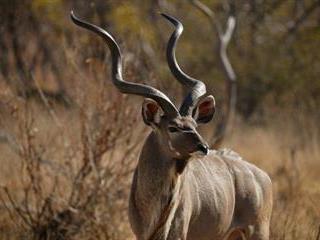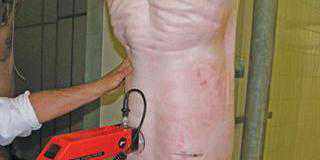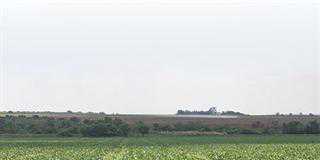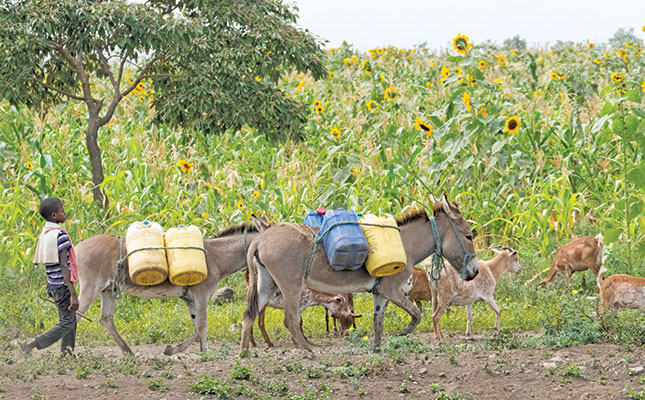
It has often been said that, in order to survive, wildlife must have financial value. Unquestionably, business people-turned-game farmers have succeeded admirably in increasing the market value of game animals. But more than one expert is concerned about potential loss of genetic diversity and possible vulnerability of species to disease and parasites through selection for specific traits and narrowing of gene pools.
Business people with little experience of animal production systems frequently enter game ranching, as they do other farming sectors. In most of these cases, however, the business partner is silent and relies on the expertise of his farmer partner with a proven track record. This is one way of making sure their investments perform.
In the game breeding arena, one regularly hears talk of ‘superior genetics’ and ‘top quality animals’. This kind of talk, while sound from a marketing point of view, sometimes comes from people whose knowledge of genetics, and what may constitute quality genetics, is somewhat vague. This is small wonder – genetics is a complex field requiring a depth of knowledge and scientific expertise.
Every farmer knows that farming is an unforgiving business. Mistakes made in breeding can take several generations to put right, by which time bankruptcy may have deselected the farmer.
Recently, a well-known game farmer described a young buffalo as having the potential to have the largest horn spread in the country. The buffalo is half-brother to a bull sold by the farmer for R26 million in 2012. While it may be true that the young buffalo does have the potential to grow horns reaching a record spread, it is also true that genetic potential is just that – potential. It does not necessarily follow that a bull with record horns will sire male offspring with the same horn phenotype.
In fact, it is well known that quite unexceptional parents can produce exceptional offspring, and vice versa.
Key driver
Setting aside the popularity of breeding colour morphs in various species, a key driver in breeding, marketing and selling game is horns. Horn length, size, width, spread, rings, spirals, trophies and general magnificence are what breeders and hunters seek out.
Horns are an underlying force in the market and horn size is a trait with significant financial value. Even meat and biltong hunters are unlikely to sniff at the chance of taking an animal with a great set of horns if the opportunity comes their way.
Vleissentraal auctioneer Niel Swart says the goal of breeders is to breed animals with horn sizes sported by animals hunted out in the 19th century.
“In 2012 we had the first 50” (1,27m) sable bull that sold for R12,2 million. In 2013 we had two 50” sable bulls. The buffalo Horison had a horn spread of 51,5” (1,3m) and the buffalo Mystery sold to Dr Johan Rupert in 2013 had a horn spread of 53” (1,34m).”
What Swart says would seem to indicate that selection for horn size is beginning to have an effect on succeeding generations. Certainly, Lindsay Hunt of HuntAfrica says he has noticed a gradual increase in horn measurements in his buffalo. Hunt looks at averages and variations from these. He has been breeding buffalo for 20 years, which gives him an advantage in overviewing his herd and the ability to judge their genetic prowess.
Buffalo have been described according to their location of origin – Addo buffalo, Umfolozi buffalo and Kruger buffalo.
“Within these populations there will be genetic bottlenecks,” says Hunt. “Shooting out buffalo in Addo left the surviving population with tighter and higher-set horns and a smaller body size.
“The Addo buffalo are nocturnal browsers, unlike the normal diurnal, grazing buffalo more familiar to game farmers and tourists. We could make an assumption about smaller animals surviving the pressure of the hunter’s selection.” Genetic bottlenecks can certainly cause a loss of genetic diversity and possibly a weakening in the biological fitness of the species.
Heritability
In a 30-year Canadian study of a wild population of bighorn sheep (Ovis canadensis), David W Coltman and other scientists at the University of Calgary found that horn size was correlated with body size and weight and that both traits were highly heritable. Continual selection by sport hunters for trophy rams led to a decline in body weight and horn size. Hunted rams were generally young animals and had therefore not made much of a genetic contribution to the population.
In an article on Texas Longhorn cattle, Prof David M Hillis of the University of Texas writes that horn length is a quantitative trait, unlike hair colour, which is a qualitative trait. A number of different genes, environmental conditions and random factors influence quantitative traits, which makes it more difficult to select for the trait, according to Hillis.
The heritability of a trait is described by the ratio of genetic variation to phenotypic variation and can range between 0 and 1.
Heritability is that part of the total phenotypic variation founded in the genetic base. Breeders care about heritability, because continual selection for a desired quantitative trait shifts the ratio to favour the selected trait. The heritability of quantitative traits is generally lower than 0,5.
Therefore, horn length will not increase by much in one generation. But heavy selection over time will see an increase in horn length. In cattle, milk production has a heritability factor from 0,3 to 0,35, while fat content has a higher heritability of 0,4 to 0,5, according to Dr Bennet Cassell, a genetics and management specialist at Virginia Tech in the US. Mature cow weight can have a heritability as high as 0,5.
Selecting dairy cows for high milk volumes will provide high producers for dairy farmers, but may come with some unwanted sacrifices such as lowered fertility.
Balanced selection
There could be serious risk associated with heavy selection for a trait such as horn size, because other valuable traits may be subdued. With high heritability in milk production, mature weight and disease resistance, single trait selection may cause a decrease in the overall quality of the animal. Care must always be taken to select for the other traits, otherwise breeding programmes can become destructive to the population.
Genetics is a 50:50 game, says Hunt, because each parent contributes 50% of the genetic material to the offspring. However, the use of a bull with the right attributes and desired traits is the fastest way to improve a herd because one bull can serve many cows.
Databases
Future breeders will be able to choose animals according to transfer of heritable traits using DNA markers, but there are no trait markers currently available in game populations. Databases need to be built up from historical records, which most ranchers have not kept up until now. A wide base of many generations means a greater opportunity for an animal to “punch above its genetic weight”, says Hunt.
“If your breeding programme focuses on one trait, you risk the loss of others and you risk genetic variation loss and fix negative factors,” says Cindy Harper of the Veterinary Genetic Lab at the University of Pretoria.
Email Nan Smith at [email protected].













